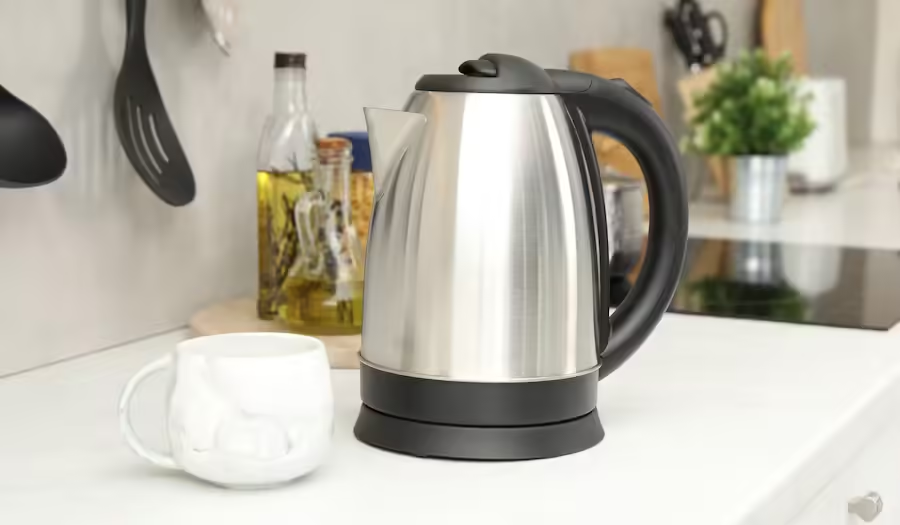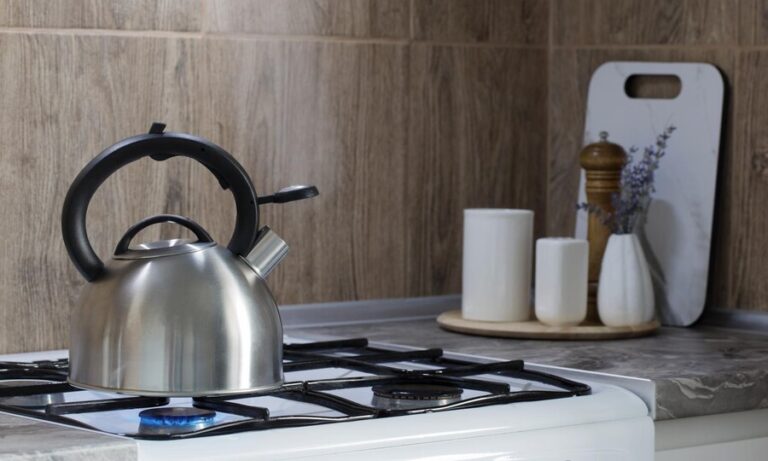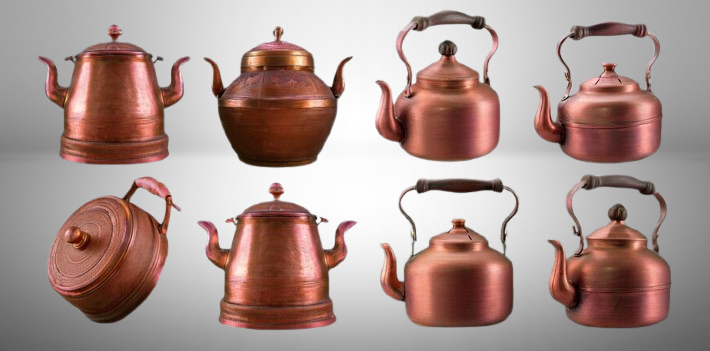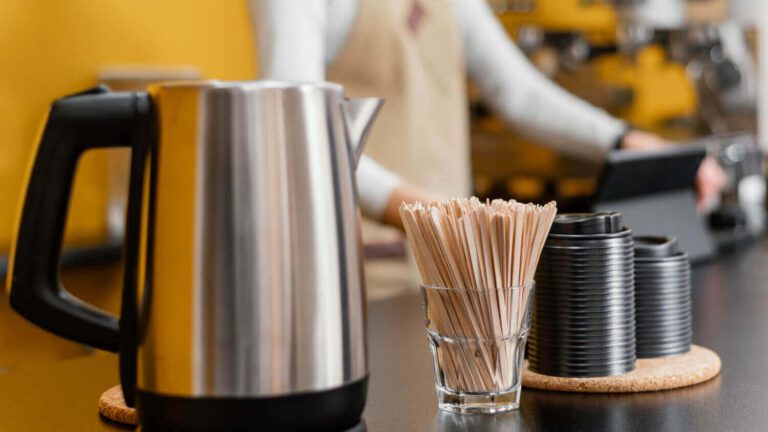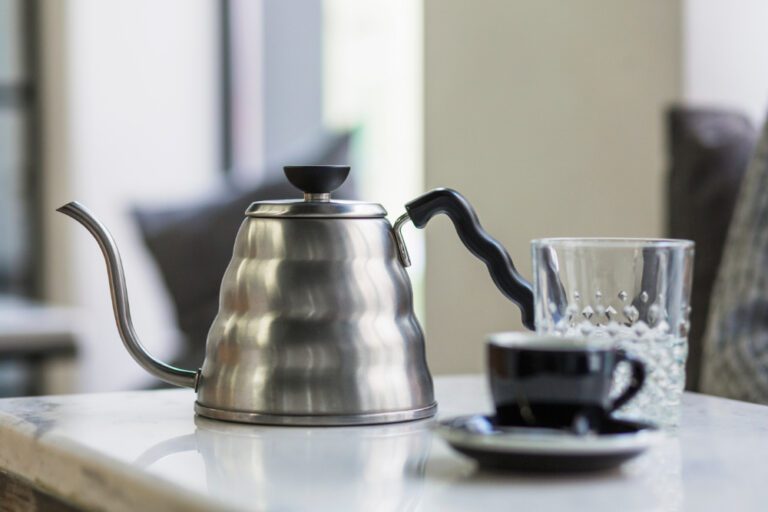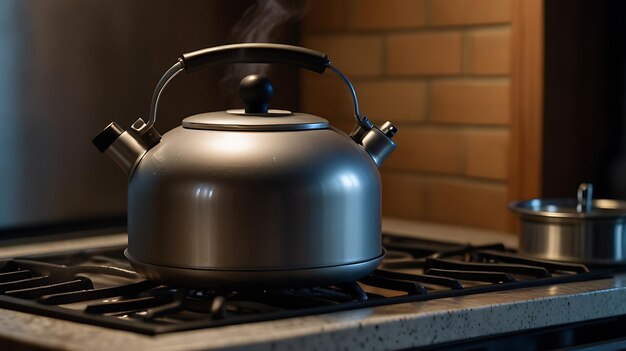Can You Boil Milk In An Electric Kettle? Best Hacks and Warnings to Consider
Electric kettles have become popular appliances in most human homes, particularly in the kitchen, because they efficiently heat water to make teas, coffees, or any other hot drink. However, one of the most frequent questions that comes up is whether it is possible to boil milk in an electric kettle.
This article will teach you more about boiling milk in an electric kettle. It also covers everything you need to know to keep your kettle up and running and prevent accidents.
Looking for the best electric kettle for your kitchen? Check out our comprehensive guide on the Best Electric Kettles to find the ideal option for your home!
Table of Contents
Boiling Milk vs. Boiling Water: Key Differences
Water and milk are white liquids that are quite similar in some aspects. In contrast, they differ greatly in others: heating the given substances results in forming rather different products.
The proteins, fats, and lactose sugars contained in milk do not respond to heat like water. Here are some critical differences between boiling milk and water:
- Boiling Point:
The protein compounds present in the milk raise the boiling point higher than that of water because of the fat and sugar.
- Scorching:
Milk has a bad record because it is prone to scorched or burned surfaces when it boils or is heated directly to a hot plate.
- Foaming and Overflowing:
Quantities of milk substances can expand quickly when heated, resulting in foam. If not controlled, this foam can flow over the sides of the kettle, creating a mess.
- Sticky Residue:
Milk produces stickers, which are a result of the proteins and fats in the milk. This crust can cling to the kettle’s heating coil and cause a scorching smell, staining, and harm.

Can You Boil Milk in an Electric Kettle? The Do’s and Don’ts:
It is possible to boil milk in an electric kettle; however, this is usually discouraged unless it is designed for the purpose. Normal electric kettles are designed for heating water, and when they are used to heat milk, they result in burning, overflows, and difficulty cleaning.
Here’s why it can be problematic:
- Overflow and Spills:
Boiling milk often overflows due to the foaming effect, which is made worse by kettles that do not have temperature control.
- Burnt Residue:
Milk causes a hard-to-remove residue on the bottom, which, over time, damages the heating element’s workings.
- Risk of Burning:
Because most of the electric kettles are built to boil water, the base might scorch the milk if it comes into contact with it for some time.
However, some modern electric kettles have temperature settings that let you heat your milk to a certain temperature without causing it to boil. It can be useful for making coffee, hot chocolate, or heating milk.
Why You Shouldn’t Boil Milk in a Regular Electric Kettle:
How to Boil Milk Safely Using an Electric Kettle: Step-by-Step Guide:
If you still wish to use an electric kettle to boil or heat milk, there are a few steps you can take to minimize the risks:
- Use a Kettle with Temperature Control:
Electric kettles with a temperature adjustment knob are the way to go. Another benefit is that it makes warming milk a breeze, unlike when you boil it and then let it cool on the stovetop. Typically, milk is heated to a range of 70 to 80°C (158 to 176°F).
- Stir the Milk Frequently:
This is important because heating can cause the milk to stick to the heating element, burn, or stick at the bottom of the kettle.
- Turn Off the Kettle Before Boiling:
You ought to switch off the kettle as soon as you hear the hissing sound of the milk boiling or just as the milk is about to boil over. The moment the milk starts foaming, it becomes hot enough for use in most of the different meals.
- Clean the Kettle Immediately:
If milk has to be boiled it needs to be poured into a kettle, then a cleaning process is also required. It can be rinsed out with warm soapy water and a soft sponge to wipe away any milk deposits on the walls or the heating element. In the case of consuming even a grain of burnt milk, the kettle should be soaked with water and a bit of vinegar to make it easy to scrub.
- Consider Using a Separate Kettle for Milk:
If you often warm up milk, it would be wiser to have a kettle or other appliance exclusively for that. Or worse still you do not want the odd flavor to mix with the other ingredients or mess up your kettle.
Kettles Designed for Boiling Milk: What to Look for in the Perfect One
Some kettles are specially made for boiling milk and the companies that make them usually indicate this feature. Most of these kettles have interiors coated with a non-stick material, temperature control, and additional functions that include anti-spill and anti-burn for milk.
If you frequently heat or boil the milk, buying any of these kettles will be beneficial rather than frequenting the traditional water kettle.
When choosing a milk-friendly kettle, look for these features:
- Non-stick Coating:
This ensures that milk does not stick to the sides or the heating component, making the utensil easier to maintain.
- Temperature Control:
Selecting a desired temperature is a feature that makes the kettle perfect for warming milk without making it boil.
- Automatic Shut-off or Milk Mode:
More kettles have a special function for milk, which warms the product to a suitable temperature and then turns itself off as soon as the milk starts foaming.
FAQs:
Will boiling milk in an electric kettle damage it?
When boiled using a normal kettle, milk can cause the heating element to foul up in the long run, given its stickiness. This can be prevented by employing kettles with non-stick interiors and a temperature control feature.
Can I use an electric kettle for other liquids like soup or tea?
Yes, but washing the kettle before each use is important, particularly if making tea with milk or any other product that forms a residue.
Conclusion:
Although home electric kettles can be used to heat liquids such as milk, it is not advisable to boil milk in them because it may splash, burn, and even damage the kettle. If you do intend to heat milk in your kettle, then it is advisable to go for a kettle with a temperature control setting.
In addition, you have to be keen on the milk and, finally, rinse the kettle promptly. For multiple milk boils, a milk kettle or a kettle dedicated to the job, such as the stovetop or microwave, is more advisable. This way, you will be sure your kettle is safe from the harm that milk can cause inside, hence prolonging its service.
